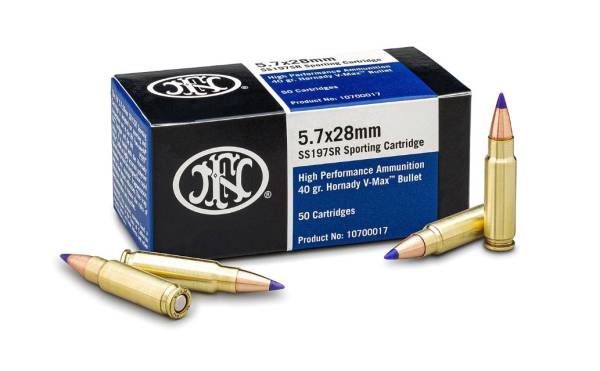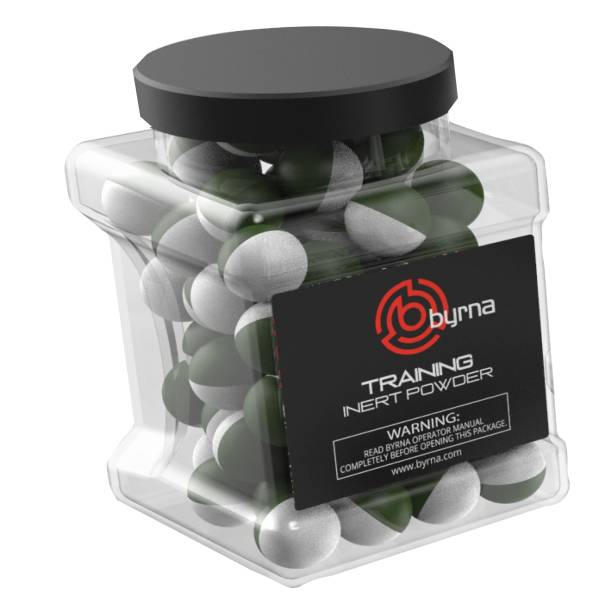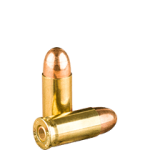Description
In 1955, Winchester introduced the .243 for two of their rifles, the bolt action Model 70 and the lever action Model 88. Known for its efficiency, the .243 cartridge enjoys a positive reputation to this day, with all major American ammo manufacturers selling the caliber with a large array of bullet weights and types. Additionally, most major firearms manufacturers have at least one weapon chambered for the .243 Winchester – which is why it’s never difficult to find bulk 243 ammunition.
243 Winchester: The King of 6mm Cartridges
It’s the only 6mm cartridge that ever effectively captured the imagination of the American ammunition market. There are certainly other 6mm cartridges available – 6mm BR, 240 Weatherby Magnum, 6mm Remington Auto and the 243 WSSM – but when was the last time you saw any of them in the wild? Other 6mm rounds are obscure, precisely because the .243 Winchester round got it right the first time. It’s a difficult bullet to improve upon – though you can’t blame Winchester’s rivals for trying.
The .243 Winchester was the first centerfire rifle for many shooters, and it was also likely the caliber they used to take their first deer. The case is a necked-down .308 that provides ample room for the powder that pushes these light, small bullets to peak performance – allowing it to take a spectrum of animals, from varmints to predators and deer (some hunters have even successfully taken an elk with this round).
Bullets for the .243 are made in power point and soft point types, with bullet weights commonly ranging between 55 and 115 grains. Muzzle velocity starts at about 2,800 feet per second at the low end, and peaks at a near 3,900 feet per second – putting muzzle energies between 1,700 and 2,600 foot pounds.
These features make it ideal for shooting varmints and medium-sized or smaller big game. Indeed, it is the first commercially available round to straddle the fence between these two worlds. Some examples include blacktail deer, whitetail deer, mule deer, wild hogs, prong horns and coyotes.
Noted wildcatter P.O. Ackley has an improved version of the cartridge. This is known as the .243 Winchester Ackley. It differs from the standard round with a modified shoulder and sides, resulting in 10 percent greater powder capacity and a slightly increased velocity. That was about as much powder as you could realistically burn in 1955, and it’s not much less efficient today.
The Life of P.O. Ackley
Parker Otto Ackley, better known as P.O. Ackley, was an American gunsmith, wildcatter, barrel-maker and writer. He is the father of an entire family of wildcatted rounds known as Ackley Improved. Specifically, Ackley was almost always looking for a larger case capacity. He found this by rechambering his own weapons, decreasing body taper and increasing shoulder angle by fireforming. Ackley was known for tinkering not just with factory-standard ammunition, but also with rounds he liked from his fellow wildcatters.
Ackley started his gunsmithing business in Oregon in 1936. The Second World War, however, interrupted his plans. He re-opened his smithing business in 1945, this time in Trinidad, Colorado. In addition to his business, he was also a staff writer for Shooting Timesand Guns & Ammo. He also taught at Trinidad Community College from 1946 to 1951, where he shared his extensive knowledge of American firearms and ammunition with a new generation of up-and-coming gunsmiths. In the end, he innovated no less than 30 different kinds of wildcat rounds.
Beyond his mastery of the craft of wildcatting, Ackley was a keen researcher of firearms and ballistics – often testing weapons to the point of destruction. In fact, he made rounds specifically designed to test the limits of what a weapon could do.
The .22 Eargesplitten Loudenboomer, one of the most famous wildcatted rounds, was one of his creations. He developed this for Bob Hutton of Guns & Ammo, with the sole intent of creating a round capable of traveling faster than 5,000 feet per second. Sadly, the round was only ever able to travel at 4,600 feet per second. The round, a modified .378 Weatherby Magnum way over the appropriate bore diameter, remains nothing more than a footnote and a curiosity today.
He was a fan of humorous rounds in general. For example, Ackley was also the mind behind the 17 Flintstone Super Eyebunger, which was a necked down .22-250. Australian gunsmith Bill Hambly-Clark, Jr. has successfully made this round travel at speeds of nearly 4,800 feet per second out of a 52-inch barrel weapon.
The term “Ackley Improved” has been applied to rounds that Ackley himself never worked on. This is because Ackley had clear guidelines about what constituted an “improved” round. According to Ackley, “Improved” meant that the chamber for the new round should be capable of shooting the original parent round. The cartridge case of an Ackley Improved round should also be necked up or down to accommodate a different bullet size, without stretching out the casing.
The Benefits of 243 Ammo
Stopping power is one feature that makes this one of the most popular calibers on the ammo market since its introduction in 1955. This, combined with low recoil and relatively low noise, make it ideal for the hunter who wants help staying calm while shooting accurately. For smaller hunters and those with shoulder issues, this might be the heaviest-duty ammunition they can realistically use.
The .243 has a light recoil and hits the target with high accuracy. It performs well out to 200 yards and beyond on deer-sized game – some hunters claim to regularly take whitetail deer at 400 yards. The LAPD Special Weapons And Tactics unit employed the cartridge in urban counter-sniper roles soon after the creation of the unit. There are currently no military units using the .243 Winchester.
While the U.S. enjoys the many benefits this round has to offer, it’s subject to a special law in the United Kingdom – the Deer Act of 1963, requiring a floor for bullet diameters at .240. This makes the .243 the entry-level round for deer hunting in the U.K., where the Deer Act is still in force.
If you’re a serious gun collector (or just someone who has trouble leaving a gun at a gun shop), you probably already have a weapon chambered for .243. Its benefits seem endless – it can take out varmints, hunt virtually any North American game, or take out a hostile intruder from a distance. On top of all that, this caliber is easy to find – making it pretty easy to find cheap 243 ammunition. This capable cartridge will likely be in demand for many years to come.
243 Ballistics: Chart of Average 243 Ballistics
Note: This information comes from the manufacturer and is for informational purposes only. The actual ballistics obtained with your firearm can vary considerably from the advertised ballistics. Also, ballistics can vary from lot to lot with the same brand and type load.
FAQ
What is the difference between 223 vs 243 ammo?
When comparing the .223 Remington to the .243 Winchester, the two rifle cartridges have some differences. Although they both sit in a rimless, bottleneck case, the .243 has a wider diameter bullet (by about 0.5mm) and tends to weigh more. The .223 uses a small rifle primer and is loaded to a pressure of 55,000 psi, while the .243 uses a large rifle primer and has a pressure of 60,000 psi. This combination leads to a more powerful round, with the .243 performance beating the .223 in both velocity and muzzle energy.
What grain of 243 ammo should you use to hunt turkey?
Most hunters don’t recommend using a .243 for turkey hunting as the round is too powerful and may ruin much of the meat. In some jurisdictions, rifle hunting for turkey is prohibited, so check local regulations. If you want to use a .243, which is ideal for medium- to large-sized game and varmint hunting, opt for a light bullet between 55-75 grain, which will lower the velocity and reduce the wound size. If you prefer to have much of a bird left to roast, consider using a 12 gauge or 20 gauge shotgun. If you want to stick with a rifle, you may have better luck with the .17 HMR, the .22 Hornet, or the .22 WMR.
How much does 243 ammo cost?
Due to its popularity, .243 ammo remains readily available and affordable. On average, the ammo ranges from about $0.67 per round for soft point ammo to over $2.00 a round for specialty ammo.
What is the best .243 ammunition for deer hunting?
Most deer hunters opt for something other than a full metal jacket (FMJ) .243 ammo to increase stopping power. Consider Hornady’s Super Shock Tip or Speer’s Grand Slam, both of which feature an expanding bullet to create a deeper and more deadly wound.
Federal 243 Fusion ammo is another exceptional option when hunting whitetail deer. Their Fusion soft point is designed for reliable and consistent expansion, and their 95 grain bullets traveling at nearly 3,000 FPS will provide excellent penetration to ensure a clean kill.
What animals can be hunted with .243 Winchester ammo?
The .243 Winchester can be used to hunt a variety of North American game. It’s appropriate for medium game, as well as for some of the smaller large game, such as whitetail deer and elk. The .243 is also popular for hunting varmints and is often considered a top coyote gun.
What is the effective range of a .243?
The effective range of the .243 depends on what you’re shooting. For varmints, the ammo is effective up to 400 yards, while for hunting large game, such as whitetail deer, the maximum range is about 300 yards for commercial ammo.
Is .243 ammo good for target shooting?
The .243 Winchester is popular as a target shooting ammunition. The round is powerful, but doesn’t cause too much recoil and is manageable by most shooters. What’s more, the cartridge has a flat trajectory, making it easy to use at the range or silhouette course. The ammo is readily available and affordable, especially when bought in bulk. Opt for soft point or full metal jacket ammo for the best price for target shooting.
What ammo is cheaper 270 or 243?
The prices of .270 Winchester and the .243 Winchester are rather similar. Because it’s more popular and versatile, the .243 Win is often found cheaper, with the caliber starting at about $0.67 a round, where the .270 Win starts at around $0.90 a round.





